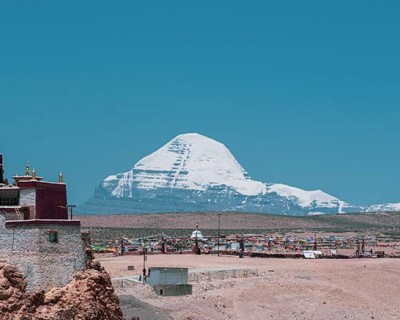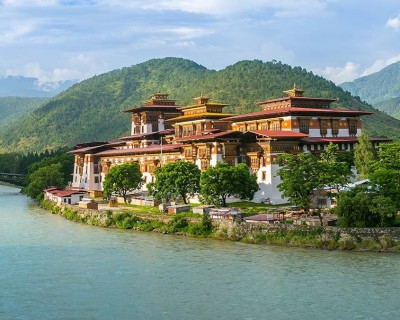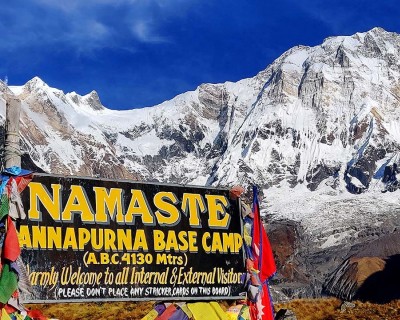How difficult is Kanchenjunga Trekking?
Kanchenjunga in Nepal is graded as a strenuous trekking destination. This trek is difficult. By difficult, it means that you have to cross different mountain passes facing tough descends and ascends. Also, this trek is difficult because of the duration you have to invest in trekking. You will be walking through rural settlements for more than three weeks.
Conquering several mountain passes to meet the highest elevation of 5150 meters isn’t an easy journey. You need packages of patience and endurance to keep going. Otherwise, walking through the difficult passes, wild glacial rivers, lone forests, and rocky terrains is exhausting!
One has to obtain the restricted area trekking permit from Nepal Government before going to Kanchenjunga. You cannot go there along. You must go with a registered professional guide.
This trek is difficult but isn’t impossible. One can achieve anything with strong determination and regulative plans. What you do is not only the factor that determines success. You must go through the right company with professional guide and crew. Contact us. Marvel adventure is a renowned trekking agency in Nepal that has been conducting safe treks and tours in all parts of Nepal.
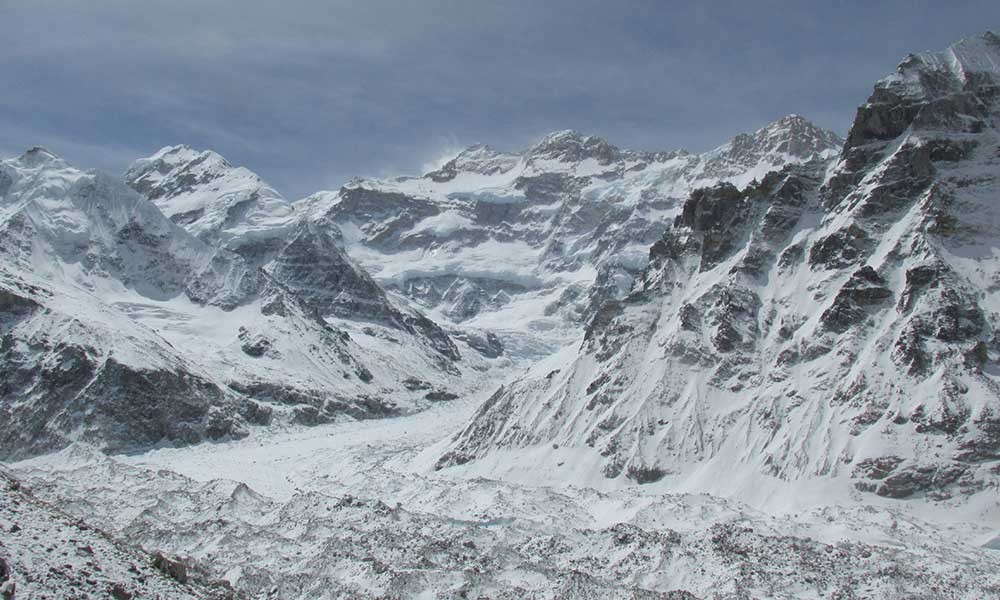
Two Routes to Kanchenjunga: Which is more Difficult?
There are several trekking routes to Kanchenjunga. However, the two trekking routes to the Kanchenjunga base camp are more popular: the northern and the southern route. But during the Kanchenjunga Circuit Trek, you will have to go through both these routes.
If you want to have a short trip, you can visit any one of the two base camps: Kanchenjunga North Base Camp trek or Kanchenjunga South Base Camp trek. Both the trails are highly scenic. However, in terms of difficulty, the trekking route to the northern base camp is quite challenging than the southern one.
The highest point during Kanchenjunga north base camp trek is at Pang Pema, 4785 meters. However, the Kanchenjunga south base camp trek takes you to the highest of 4160 meters.
Outline Itinerary of Kanchenjunga Base Camp (North) Trekking
Day 01: Fly from Kathmandu to Bhadrapur and drive to Ilam (3636m). 45min flight & 4 hr drive
Day 02: Drive from Ilam to Taplejung (1820m) 4- 5 hrs drive
Day 03: Trek from Taplejung to Chirwa (1250m) 6-7 hour hike
Day 04: Trek from Chirwa to Sukethum (1500m) 5-6 hour hike
Day 05: Trek from Sukhethum to Aamjilasa (2400m) 4-5 hours hike
Day 06: Trek from Aamjilasa to Gyabla (2750m) 5-6 hour hike
Day 07: Trek from Gyabla to Ghunsa (3430m) 4-5 hour hike
Day 08: Acclimatization day in Ghunsa (3430m) 4-5 hour hike
Day 09: Trek from Ghunsa to Khambachen (4050m) 5 to 6 hour hike
Day 10: Trek from Kambachen to Lhonak (4800m) 5 to 6 hour hike
Day 11: Trek from Lhonak to Pangpema (North Base Camp) and get back to Lhonak (5200m) 3 to 4 hours
Day 12: Trek from Lhonak to Ghunsa (3430m) 5 to 6 hours
Day 13: Trek from Ghunsa to Amjilosa (2510m) 7-8 hours
Day 14: Trek from Amjilosa to Tapethok (1380m) 6-7 hours
Day 15: Trek from Tapethok to Mitlung (921m) 7-8 hours
Day 16: Trek from Mitlung to Taplejung ( 1820m) 4-5 hours
Day 17: Drive from Taplejung to Bhadrapur (93m) 10 hours drive
Day 18: Fly from Bhadrapur to Kathmandu (1380m) 1 hour flight
Our trek itinerary is customizable. Let us know about your preferences and we will schedule a perfect trek itinerary for you. Contact us.
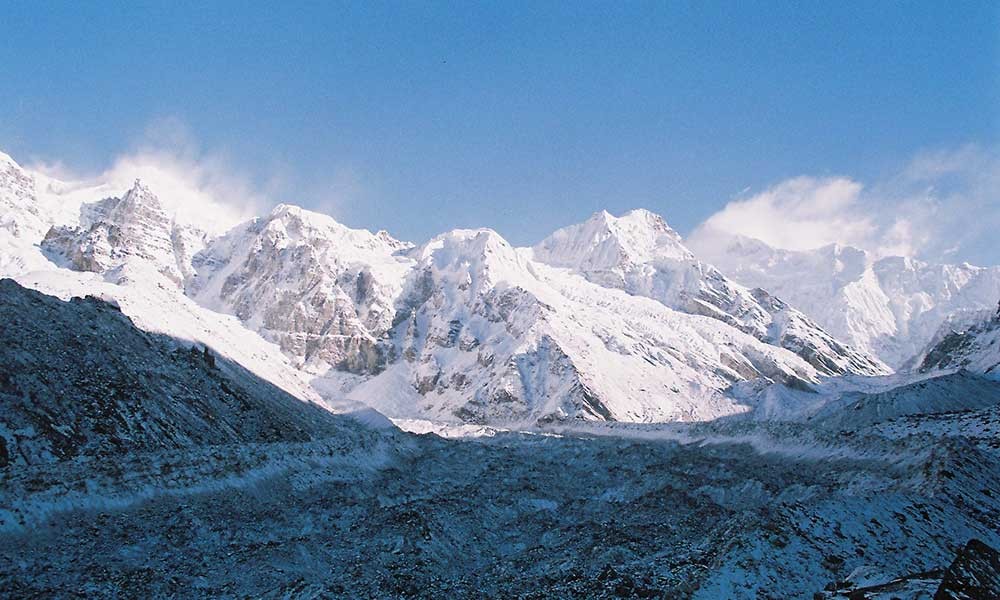
Difficulty Factors During Kanchenjunga Trek
Distance
The first on the difficulty factor during Kanchenjunga trek is the distance. The Kanchenjunga circuit makes a round of around 200 kilometers to and from Taplejung. The trip to Kanchenjunga base camp lasts for more than three weeks.
It takes you around two weeks to reach either base camp from Taplejung. This includes 2 rest days at Ghunsa and Kambachen. The per day walking distance is roughly 9 to 11 kilometers.
Though the per day distance of Kanchenjunga trek is lesser than of Everest Base Camp trek, the number of days on this trek is as twice as of a standard Everest base camp trek.
Elevation
If you are coming from the sea level, you already gain altitude while landing in Kathmandu, 1300 meters. During Kanchenjunga trek, you will be flying to Taplejung, 1400 meters.
Higher the elevation, lower the oxygen level. This is the one thing to keep in mind while trekking in the Himalayas of Nepal. While trekking in Kanchenjunga, you will roughly gain 400 to 500 meters every day. With the gain, your body will have to adjust a lesser oxygen level.
If you are someone who is not exposed to any high altitude experiences, it might be hard for your body to adapt to the new oxygen levels. But don’t worry, practice some aerobic exercises starting a few months before your trek. There is no sharp increase in altitude during Kanchenjunga trek. This will make your body easier to acclimatize. However, you must be very cautious.
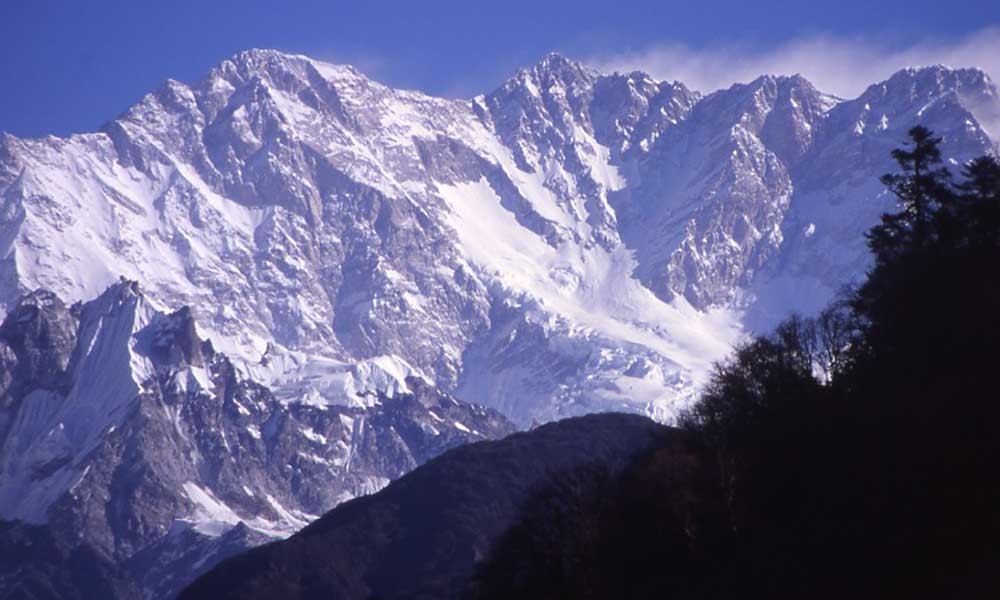
Camping
Kanchenjunga trekking is a camp trekking. Due to the remoteness of this trek, there are no regular teahouses on the trekking trail of Kanchenjunga. Thus, at the places where there are no teahouses, you will have to stay in camps. Camp trekking is enjoyable. However, managing a camp trekking is hard. You need extra crew members to help carry tents, foods, gas stoves, and everything.
Weather & Temperature
There are many high altitude points on the Kanchenjunga trek route. At high altitudes, weather changes are frequent. As the weather conditions become bad, you will start seeing different kinds of risks. Some of them are chances of rock slides, slippery terrains, landslides, and many others. Trekking during the bad weather is very tough.
Weather at the lower elevations are stable and good does not mean it will be the same at higher altitudes too. For Kanchenjunga trekking, the most favorable months are April, May, September, October, and November. During these months, the weather condition is quite good even at the higher altitudes. There are fewer chances of rainfall, snowfalls, and bad winds.
But it can rain occasionally at any time. And the nights and mornings at the higher altitudes will always be cold. Take cautions and keep updated on the weather conditions in the Kanchenjunga circuit before you decide to trek.
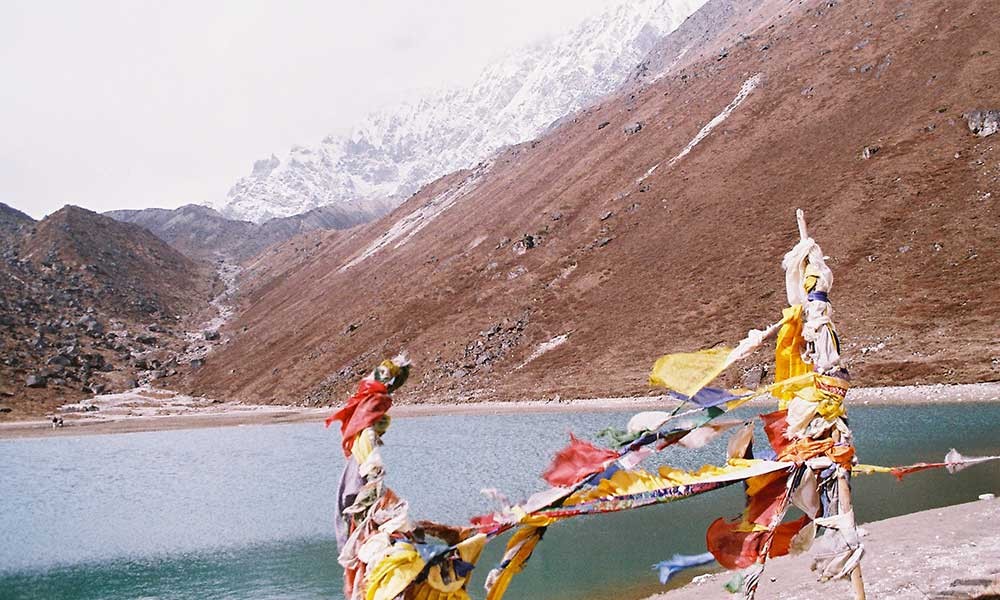
How to Deal With Difficulty in Kanchenjunga Trek?
Monitor your health
While you are trekking, you should monitor your health at least twice a day. Make sure that you are feeling alright. Also, make sure that everything is good in your neighborhood. Ask your friends whether they are good or not.
Drink plenty of safe drinking water
Hydrating your body is a must do thing while you are trekking in Kanchenjunga. A hydrated body means the risk of altitude sickness is less. We advise you drink 2 to 3 liters of water a day. You should carry your own refillable water bottle, preferably with a filter. Drinking impure water on the trail is not hygienic. So, you should carry the water purifying tablets also. Process your water before you drink it.
Carry a Pulse Oximeter
A pulse oximeter is your best friend during the high altitude treks. It is lightweight and is small in size. You can easily measure your pulse rate and the oxygen level in your blood. In cases when you feel like you have some signs of altitude sickness, use the oximeter. Many times on trek, you feel low in energy and begin to fear if it is altitude sickness. Oximeter will help you know instantly what it is.
Acclimatize properly
Acclimatization is a key to success. Gaining more altitude in a single day during high altitude treks is not safe. Even if you feel healthy physically and mentally, make sure you do not try overdoing things.
There are various places on the trek where you must take a rest. On the rest days, you should take an acclimatization hike. Reaching high during the day and sleeping low at night helps your body to adapt with lowering oxygen. Do not escape the acclimatization schedule.
Pack adequate gears
This trek isn’t a 1-week or 2-weeks trek. You will be spending more than three weeks at one of the remotest parts of Nepal. On the trail, you will not find places to buy anything, if you forget to get that by yourself. So, before you go, you must make lists of things that you need. Pack all of them carefully. Include every essential thing. Try to exclude optional things that will only add weight.
When to Do Kanchenjunga Trekking?
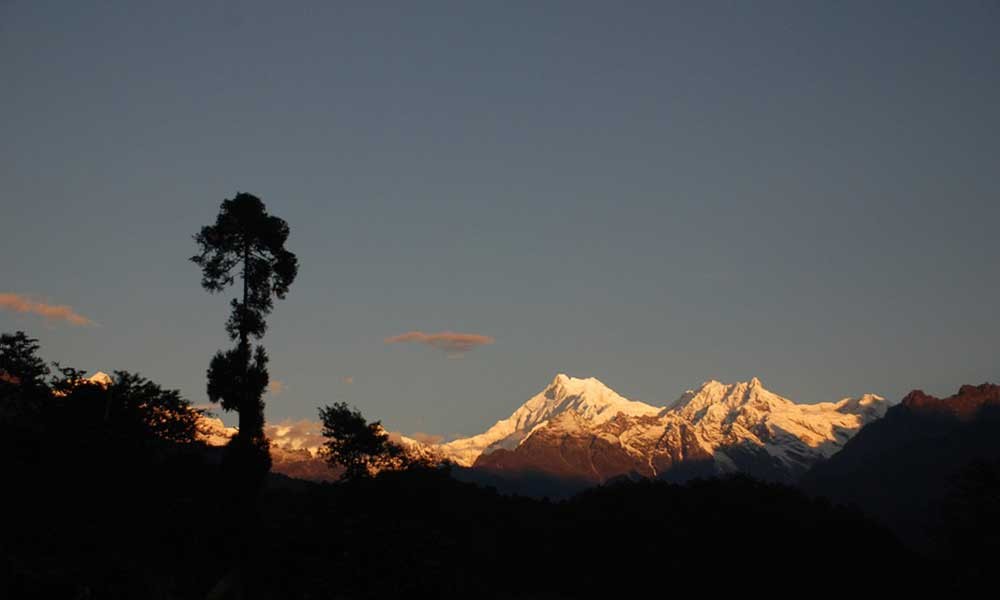
Like most of the other popular trekking trails in Nepal, the most popular time of the year for Kanchenjunga trekking is during Autumn and Spring seasons. Kanchenjunga is a camp trekking. So, favorable weather conditions are the must for trekking in this route.
Autumn (September, October, and November) is the best season for trekking in Kanchenjunga. During this season, thousands of trekkers from around the world flood in the trekking trails of Nepal.
Autumn has clearest skies and most stable weather conditions. During autumn, the air quality remains at its best. The weather and temperature remain mild and stable offering best time to trek. Also, this season is popular because of the least chances of rainfall and snow.
Spring (March, April, and May) is the most popular trekking season after Autumn. This is the time of nature lovers. The forests in Kanchenjunga trek route fills with colorful blossoms of wildflowers. You will see different colors of Rhododendron, the national flower of Nepal.
Along with the enchanting views of lush hills and colorful forests, Spring has stable weather. Also, temperatures remain moderate even at the higher altitudes. Skies are blue and the visibility is really good.
Trekking in Kanchenjunga during peak seasons is a beautiful choice to make. Since this trek is less popular then Everest and Annapurna region treks, you will have a good time trekking over empty trails in Kanchenjunga.
Contact us. We will help you organize the best trek to Kanchenjunga. We will help you arrange a guide, porter, your trekking permits, and other essential documents.
Permits for Kanchenjunga Circuit Trek: How Can I Get It?
Kanchenjunga is a restricted trekking area in Nepal. Also, we will be walking into the periphery of the Kanchenjunga Conservation Area during this trek. Thus, for trekking in Kanchenjunga, you will require Restricted Area Permit and the Kanchenjunga Conservation Area Project Entry Permit.
Obtaining the restricted area permit is not easy. You have to fulfill the criteria by the Nepal government. You cannot trek alone in Kanchenjunga. To obtain the restricted area permit, you must have a group of at least two trekkers per group. Then, you must hire a registered and experienced guide. Now, you can apply for the permit.
Marvel Adventure is a renowned trekking agency in Nepal. We organize the best treks and tours in different parts of the country. We will help you arrange your guide. We will also help you apply for your trekking permits. Do not hesitate to Contact us.







